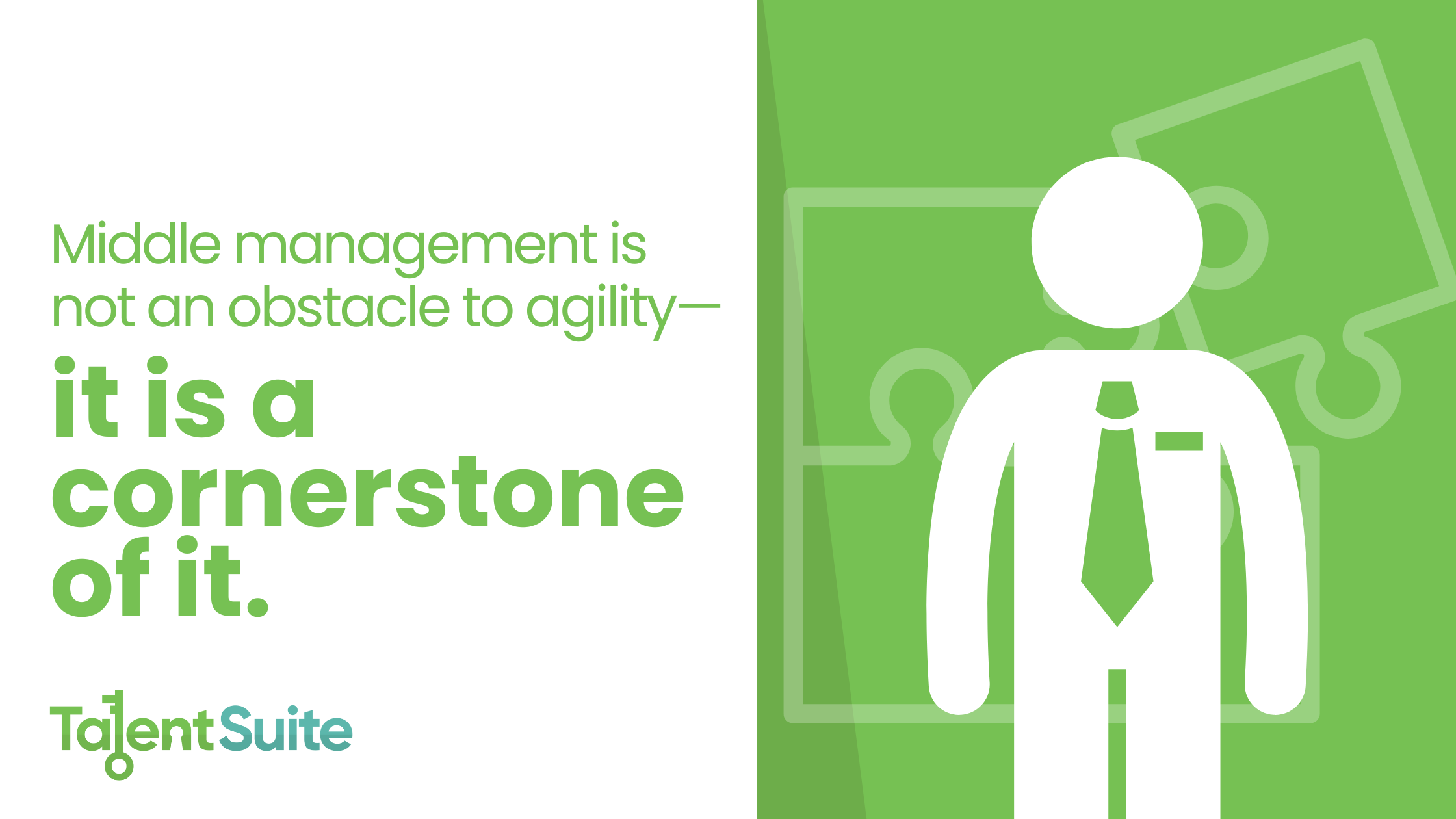
24 Jun Middle management is not an obstacle to agility—it is a cornerstone of it.
There’s been a lot of talk lately about the future of middle management. With companies adopting AI tools and pushing for leaner org charts, some are starting to eliminate manager-level roles altogether.
But according to Harvard Business Review, that might be a costly mistake.
44% of U.S. professionals say their company has already scaled back on middle management, according to a recent Korn Ferry report. Gallup data shows that middle managers are experiencing the sharpest drop in engagement. And Gartner predicts that by 2026, one in five organizations will use AI to flatten their structure, cutting over half of current middle management positions.
At the same time, the demands on these middle managers are growing. Generative AI is starting to handle more complex tasks. Customers expect faster responses and deeper relationships. Senior leaders want agility and managers are stuck in the middle–juggling it all, often without the tools or training they need.
It’s no wonder some organizations see middle management as expendable.
However, as HBR points out, that view overlooks something critical: middle managers are key to helping companies adapt and perform.
Here’s why they matter
Middle managers are the connective tissue between senior leadership and the frontline. They have access to real customer insights and are often the first to notice changes in behavior, needs, or expectations. That makes them essential in helping organizations refine their value proposition and stay competitive.
They also play a coaching role. As roles shift and new technologies emerge, it’s the middle managers who guide their teams through change, support learning, and help build the skills needed to keep moving forward.
They aren’t just supervisors. They’re interpreters. Translators. Mentors. Facilitators. All in ways AI simply can’t be.
However, most middle managers haven’t been trained to do that.
From oversight to facilitation
The job of a middle manager used to be about monitoring performance and making sure things got done. Today, it’s about enabling performance and helping people grow. It requires strong communication, emotional intelligence, and the ability to lead through others.
In other words, it requires a completely different skill set moving from a contributor role to a managerial role. Middle managers are typically promoted from within for performance and hard skills, but once they get to that middle manager level they need to have soft skills they potentially haven’t had developed before to succeed.
And that’s the gap many companies are facing. According to HBR, organizations still promote people based on their performance in unrelated roles—like making a top salesperson a manager—without considering their ability to coach, collaborate, or lead change.
Even worse, success is often measured in outdated ways that ignore what middle managers actually need to do now.
This is where Talent Suite helps
At Talent Suite, we help organizations identify the behavioral drivers that shape how someone shows up as a leader. Then we build on that foundation with practical, targeted leadership development focused on communication, coaching, and facilitation.
We work with companies that are ready to evolve their middle management model, not eliminate it. Because as HBR puts it, “Middle management is not an obstacle to agility—it is a cornerstone of it.”
The companies that recognize this will be better equipped to navigate change. The ones that don’t will risk losing their most essential layer of leadership, right when they need it the most.
Ready to rethink how your managers lead? We’re here to help.
